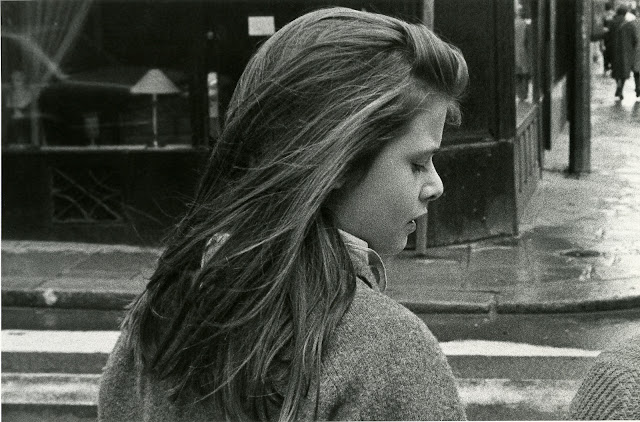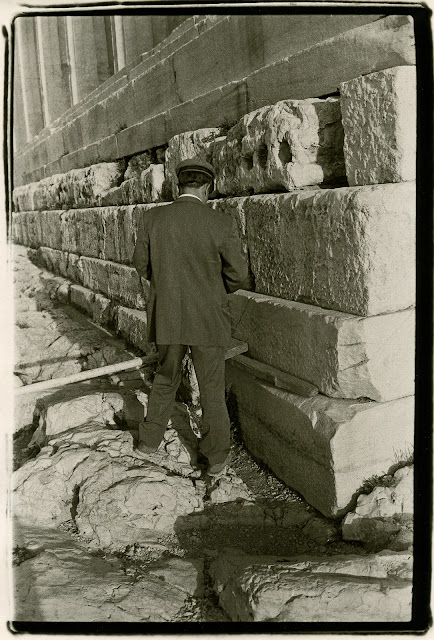12.13.2010
My story on Austin Mexican Food For Tribeza Magazine. Just for fun.
This story ran in Tribeza magazine a while back. I was driving with my kid yesterday. I told him that good writers were rare in our society and that he should practice his writing. I went on to say, "If I were in charge I'd make you write a new essay every day." He immediately countered with, "If you did that I would be a much more rebellious child..." Touche' This article may not appeal to everyone but it's a classic example in the editorial world of getting more work because you can put two disciplines together. It's cheaper to put a writer and photographer on a plane if they are the same person........ And you get paid for both parts....
A Taste of Mexico
There is a time and place for shiny, novel, ersatz, newcomer Mexican food, but the time is generally after an evening of drinking and the place is usually somewhere I really don’t want to be. Like most Austinites, I want my Mexican food to be authentic, tasty, and time tested. There has always been an uncomplimentary inflection involved in the discussion of Tex-Mex food that stems from the conceit that the clichéd gooey-cheese, orange grease, and tortilla-laden cuisine, cut with hot peppers, was invented only to insulate the human system from the onslaught of margaritas and beer and doesn’t really constitute nutrition or “cuisine.”
I couldn’t disagree more. Some of my all-time-favorite meals have come from a handful of Mexican restaurants sprinkled around Austin—meals that married incredible combinations of ingredients with masterful preparation. In fact, when “foodie” friends from either coast hit town in search of great meals, we usually default to one of three established favorites. These are restaurants that have three things in common: (1) They’ve stood the test of time and are just as relevant to diners today as they were the day they opened. (2) They’ve focused on providing engaging dining experiences that combine great food with just the right ambience. (3) The food is still the compelling reason for their existence.
The three restaurants I refer to are Fonda San Miguel, Manuel’s (on Congress Avenue), and El Azteca. They are totally different in style, presentation, and aesthetics, but each provides a rich experience in its own right.
In fairness, I should make this disclosure before going any further: We’ve been going to Fonda San Miguel for more than 25 years and El Azteca for at least that long, and we were around for the birthing of Manuel’s, which turns 25 this year.
These three restaurants offer totally different dining experiences; El Azteca is the prototypical family-run Tex-Mex-style restaurant serving traditional dishes that blend the tastes of South Texas and Old Mexico. Along with Matt’s El Rancho, El Azteca has set the standard for Mexican “comfort food” in Austin for decades. It’s the perfect place for cabrito and all our usual “combination plate” favorites. It’s very casual, with prices to match.
Manuel’s is the opposite of El Azteca’s homespun, East Side, laid-back feel. Located at the epicenter of downtown, Manuel’s is sleek and stylish. A study in black and white with touches of warm neon. The crowd on any given day is composed of young downtown professionals, a mix of advertising and magazine creatives with a blend of politicos and attorneys thrown in for flavor. The food is a perfect blend of interior Mexican traditionals with a generous nod to ongoing culinary evolution. And the presentation of the specialties is second to none.
Then there’s Fonda San Miguel: a world-class restaurant with a split personality. It can’t seem to decide between being a celebrated destination dining venue or a museum-quality art gallery, so it gracefully merges both inclinations to present a unique visual and gustatory experience beyond that of any other restaurant in Austin. Chef Miguel Ravago is doing wild and wonderful things that marry the finest traditions of haute cuisine with nuances of Old Mexico. When the food is combined with the incredible collection of art, the result is an evening that is very much a special occasion.
I’ll start with our Tex-Mex traditional, El Azteca. The building is modest and shows its age. The restaurant has been there for 46 years, after all. Walking in the front door, we were greeted by Daniel Guerra, the son of the restaurant’s founders. The walls are decorated with won- derfully kitschy Mexican calendars depicting “ripped” warriors atop Mayan pyramids and ample, half-naked women in ceremonial outfits from the ancient Aztecs, if the ceremonial outfits had been designed to be worn by Jessica Simpson at a car show. The calendars are a tradition started by Daniel’s father. He imported them from Mexico to be given away to regular customers. Now they are available for sale.
The highlight of our recent lunch was roasted cabrito (young goat) served in tasty, small chunks and accompanied by a traditional mild sauce, guacamole salad, and frijoles à la charra. The cabrito is a specialty of the house, and it was just right, almost crispy on the outside, tender and moist on the inside. We also ordered a vegetarian combination plate that took us right back to our early Austin Tex-Mex roots.
Refried beans, rice, a vegetarian taco, acres of wonderful queso, and an enchilada. Nothing heroic, just perfectly proportioned, and served promptly. From the fresh, hot chips to the easy-to-eat house-made salsa, everything about El Azteca says “rich, comforting food served up by family.” The one thing that will surprise you is just how affordable the food is.
Manuel’s Downtown is a great blend of streamlined, modern decor fused with authentic interior Mexican dishes that never disappoint. I love coming in for lunch with a fairly large party and sitting in one of the rounded, plushly upholstered corner booths with a view of the entire dining room. But the restaurant really comes alive during the dinner service, with the kind of bustling energy you normally experience in the most popular New York cafés. The waitpeople, dressed all in black, whip through the room. The patrons, also dressed mostly in black, meet and greet with alacrity, though the lucky ones who’ve already been served are oblivious to everything but the beautiful presentations and addictive smells and tastes of the great food.
On a recent visit we sampled an interesting trio of disparate dishes. The camarones veracruzanos, served on a bed of perfectly cooked rice, was a shrimp lover’s wish come true. Huge, plump sautéed shrimp, painted with a delicately spicy red veracruzano sauce, dominated the plate. The folks in this kitchen do seafood really well. Next we turned our attention to a crowd-pleaser, the enchiladas verdes. I order these chicken enchiladas covered with a piquant tomatillo sauce nearly every other visit to Manuel’s. The blend of cheese, chicken, and salsa is as close to perfection as you’ll find in Austin. On my last visit, I was pushed to try something new, so as a compromise I ordered the enchiladas banderas. The banderas are like an ultimate enchilada/ salsa pairing “taster” plate. Your choice of chicken, beef, tender pork, cheese, or mushroom enchiladas is sauced in all three of Manuel’s handcrafted signature salsas: verde, suiza, and adobada. Now I have a new favorite dish.
Most of the entrées are served with black beans and Mexican rice. Another dish that blew us away was the chile relleno en nogada. This is a roasted poblano pepper stuffed full of shredded pork, almonds, and raisin picadillo, topped with a walnut cream brandy sauce. A visual note that took the presentation to the next level was a sprinkling of brilliant vermilion pomegranate seeds. For lunch I can never resist the pork tacos, and I have another friend who is just addicted (really, in a very clinical way) to the ceviche.
I saved Fonda San Miguel for last because it’s so different from any other restaurant and even our own cultural expectations of what a restaurant can or should be. The luxe quality of the food is a given. But the food is just one part of an amazing blend of art, decor, cultural touchstones, attention to craft, and details, all of which come together perfectly. In most restaurants, waiting for your table is a bothersome experience that requires the more compulsive among us to keep one eye on our dinner companions and the other on the seating hostess to prevent “bureaucratic table loss.” At Fonda San Miguel your short stay in the atrium area will find you surrounded by exotic plants, graceful design nuances from the best of Old Mexico, and a collection of exceptional art. That would be real, museum-quality pieces that rotate through the restaurant from Tom Gilliland’s remarkable collection of eclectic and renowned international artists. Combine this with drinks from a well-versed bar staff and perhaps a plate of salmon tostadas to munch on, and you’ll find me hoping it takes at least half an hour for our table to be ready.
The two dining rooms are amazing. The larger room is delicately lit with strands of small spotlights that supplement the warm glow from a grand collection of majestic hanging bronze fixtures in the center of the room. The smaller room has some of my favorite paintings, and it also has a graceful sense of privacy about it. There is always one problem that afflicts Fonda San Miguel regulars, though. In a nutshell it’s this: If you order one dish you don’t get to order something else. Go for the Jaliscostyle steak caballero—a succulent 16-ounce bone-in ribeye served with chile de arbol chimichurri—and you won’t have any room left to even try the enchiladas suizas de jaiba (enchiladas stuffed with crab and covered with a white sauce). It’s a sad state of affairs for the indecisive.
On one of our recent visits we went with a dish that transcended the entire category of Mexican food. It was the cordero. Four plump, perfectly grilled lamb chops served with a chipotle cheese potato casserole and a mixed green salad. The lamb was easily as good as any cut of meat you’ll have at any premium steak house, while the subtle bite of the potato casserole provided a perfect counterpoint. Also sampled was a classic pescado Veracruzano. A broiled fish fillet in a traditional Veracruz tomato sauce sprinkled through with onions, Spanish olives, and capers. It was a definitive rendition of a popular dish. The range of the menu is breathtaking, and the kitchen rarely stumbles. Add in a few extras like the person in the corner show kitchen continually making hand-formed flour and corn tortillas that come hot to your table, and a well-stocked selection of fine wines, and you’ll understand why people come from all over Texas for the Sunday buffet or from as far away as Paris to sample the offerings.
So the next time one of your confederates suggests “grabbing some Mexican food” at some new place that used to be an auto shop or at some dive that puts grated cheddar cheese garnishes on the tacos, that will be the perfect time to step up everybody’s game with a visit to one of the genuine masterpieces of Mexican cuisine. From basics to blue sky, these are the restaurants that deliver what you really want. If you haven’t been to these three temples to the various genres of Mexican food, I truly envy you. Now you get to try each one for the first time!

























